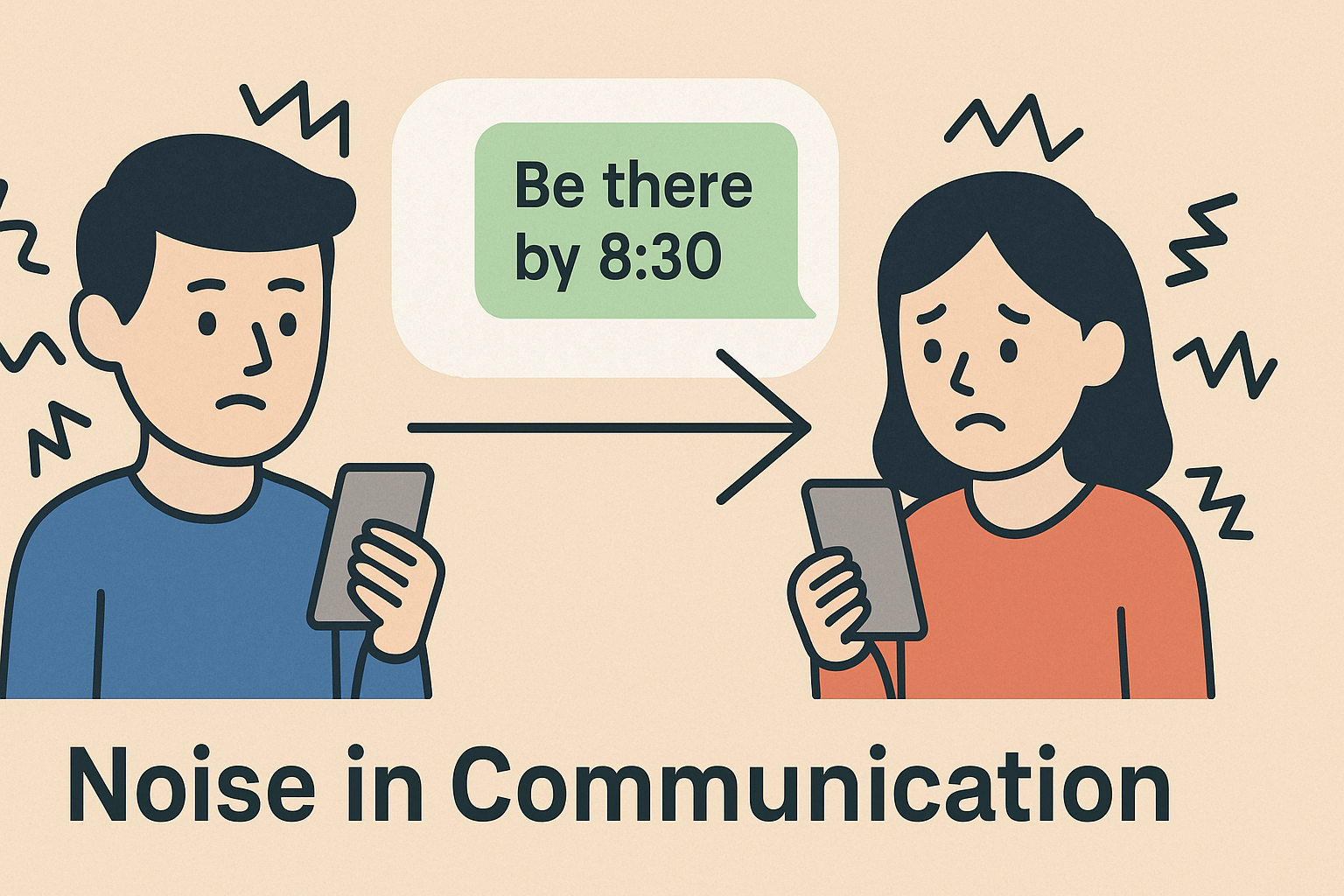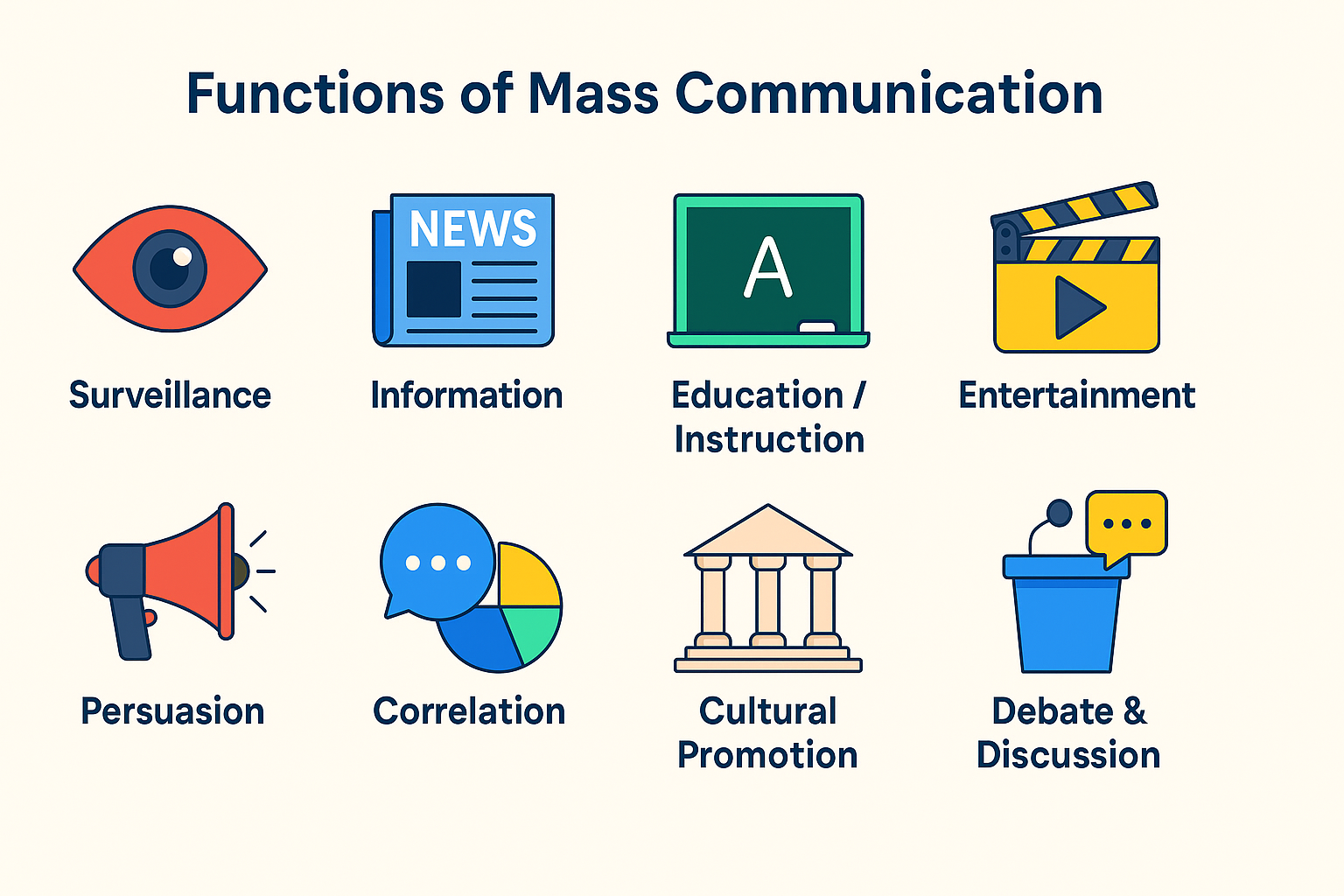Mass communication is everywhere — from the morning newspaper to your favorite Instagram reel. But what exactly is it, and why does it matter so much in today’s world?
Let’s simplify it.
Definition: What is Mass Communication?
Mass communication refers to the process of sending messages or information to large, anonymous, and diverse audiences using different forms of media — like television, radio, newspapers, or digital platforms.
✅ Key Definition:
“Any mechanical device that multiplies messages and takes it to a large number of people simultaneously.”
It’s not personal like a phone call or a WhatsApp chat. Instead, it’s designed for the masses — that is, everyone!
Essential Features
- Mass Produced Messages: Messages are created for broad distribution.
- Large, Anonymous Audience: The audience is vast, diverse, and mostly unknown to the sender.
- Mediated Communication: Uses media like newspapers, radio, TV, the internet, etc.
- Feedback: Generally indirect, delayed, or even absent.
- One-way Flow: Mostly one-way communication, unlike interpersonal communication.
Understanding the Mass Communication Process
Here’s how the mass communication process works:
| Element | Description |
|---|---|
| Sender/Source | Often an institution or media company |
| Message | Information, news, entertainment, etc. |
| Channel | Medium like TV, radio, newspaper, or internet |
| Receiver | A vast, anonymous audience |
| Feedback | Indirect, delayed, or sometimes missing |
| Noise | Barriers in communication like poor signal or language issues |
Types of Mass Media
There are 3 major categories of mass media:
- Print Media: Newspapers, books, magazines
- Electronic Media: Radio, television, cinema
- Digital/New Media: Social media, websites, podcasts, blogs
Each has its own strengths and limitations — but all share the ability to reach large numbers of people at once.
📌 While mass communication was traditionally the domain of institutions and media houses, today, individuals like social media influencers can also act as mass communicators. They create and distribute content to large, diverse audiences through digital platforms, making them direct sources in the modern mass communication ecosystem.
Example: A YouTube influencer with 1 million subscribers livestreams a product review or talks about mental health.
- Sender: An individual (the influencer)
- Channel: YouTube (a mass media platform)
- Audience: Large, anonymous, and varied
- Feedback: Through likes, comments, shares (delayed but still present)
✅ This fits the mass communication model, even though the source is not an institution.
Features of Mass Communication
Here’s what makes mass communication unique:
- Mass-produced messages: Not made for one person, but for many.
- One-way flow: Mostly from sender to audience.
- Low feedback: Viewers can’t directly reply like in a personal conversation.
- High speed: News travels globally in seconds.
- Impersonal: No emotional connection between sender and receiver.
- Gatekeeping: Media filters what reaches you.
Characteristics of Mass Communication
| Characteristic | Explanation |
|---|---|
| Large, Heterogeneous, Anonymous audience | The sender usually doesn’t know the individual receivers |
| Public messages | Content is openly available to anyone |
| Short message life | Designed for quick consumption |
| Low cost per head | Millions receive the same message |
Communication vs. Mass Communication: A Clear Comparison
Understanding the difference between communication and mass communication is fundamental in media studies. While both involve the exchange of information, they differ significantly in audience, feedback, channel, and purpose.
| Feature | Communication | Mass Communication |
|---|
| Nature | Interpersonal (one-to-one or group) | Institutional /one-to-many |
| Audience | Known, personal, direct | Large, anonymous, heterogeneous |
| Feedback | Immediate and direct | Delayed, minimal, or absent |
| Medium | Spoken words, gestures, personal symbols | Mass media (TV, radio, newspaper, internet) |
| Channel | Natural or simple tools | Technological systems and organized channels |
| Message Customization | Highly personalized | Standardized and generalized |
| Purpose | To build relationships, share meaning | To inform, educate, entertain, and persuade |
| Control Over Message | High (dialogue allows correction) | Mostly limited (message is out in public once broadcasted) |
| Gatekeeping | Rare or non-existent | Strong presence (media filters and curates) |
Final Thoughts: Why Mass Communication Matters
Mass communication informs, educates, entertains, and shapes public opinion. From news updates to viral challenges, it plays a powerful role in our everyday lives.
📚 Whether you’re a student of mass media or just curious about the world around you — understanding how mass communication works is essential in today’s digital-first world.
Want to explore more topics like this?
👉 Browse all blog posts Communication and Media Studies


